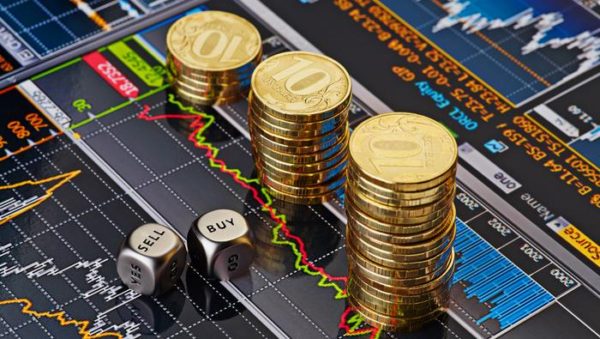
Bull vs. Bear
The terms “bull market” and “bear market” describe upward and downward market trends, respectively, and can be used to describe either the market as a whole or specific sectors and securities. The names perhaps correspond to the fact that a bull attacks by lifting its horns upward, while a bear strikes with its claws in a downward motion.
Bull market: A rising stock market over a prolonged period of time, usually caused by a strong economy and subsequent increased corporate profits. A bull market is a period of generally rising prices. The start of a bull market is marked by widespread pessimism. This point is when the “crowd” is the most “bearish”. The feeling of despondency changes to hope, “optimism”, and eventually euphoria, as the bull runs its course. This often leads the economic cycle, for example in a full recession, or earlier.
Generally, bull markets begin when stocks rise 20% from their low, and end when stocks drawdown 20%. However, some analysts suggest a bull market cannot happen within a bear market.
Bear Market
A declining stock market over a prolonged period of time, usually caused by a weak economy and subsequent decreased corporate profits.
A market trend is a perceived tendency of financial markets to move in a particular direction over time. These trends are classified as secular for long time frames, primary for medium time frames, and secondary for short time frames. Traders attempt to identify market trends using technical analysis, a framework which characterizes market trends as predictable price tendencies within the market when price reaches support and resistance levels, varying over time.
A bull market is a period of generally rising prices. The start of a bull market is marked by widespread pessimism. This point is when the “crowd” is the most “bearish”. The feeling of despondency changes to hope, “optimism”, and eventually euphoria, as the bull runs its course. This often leads the economic cycle, for example in a full recession, or earlier.
Bear Market
A bear market is a general decline in the stock market over a period of time. It includes a transition from high investor optimism to widespread investor fear and pessimism. One generally accepted measure of a bear market is a price decline of 20% or more over at least a two-month period.
A smaller decline of 10 to 20% is considered a correction. Once a market enters correction or bear market territory, it isn’t considered to have exited that territory until a new high is reached.
Market corrections
A market correction is a short-term price decline of 5% to 20% or so, which while downward is not large enough to be a bear market. Markets have historically bounced back up again after this short period, or spiraled further downward. Bear markets, per the section above, typically start after two months of decline at 20% or more.
Causes of market trends
The price of assets such as stocks is set by supply and demand. By definition, the market balances buyers and sellers, so it is impossible to have “more buyers than sellers” or vice versa, although that is a common expression. In a surge in demand, the buyers will increase the price they are willing to pay, while the sellers will increase the price they wish to receive. In a surge in supply, the opposite happens.
Supply and demand
Supply and demand are varied when investors try to shift allocation of their investments between asset types. For example, at one time, investors may wish to move money from government bonds to “tech” stocks, but they will only succeed if somebody else is willing to buy government bonds from them; at another time, they may try to move money from “tech” stocks to government bonds. In each case, this will affect the price of both types of assets.
Ideally, investors would wish to use market timing to buy low and sell high, but they may end up buying high and selling low. Contrarian investors and traders attempt to “fade” the investors’ actions (buy when they are selling, sell when they are buying). A time when most investors are selling stocks is known as distribution, while a time when most investors are buying stocks is known as accumulation.
Standard Theory
According to standard theory, a decrease in price will result in less supply and more demand, while an increase in price will do the opposite. This works well for most assets but it often works in reverse for stocks due to the mistake many investors make of buying high in a state of euphoria and selling low in a state of fear or panic as a result of the herding instinct. In case an increase in price causes an increase in demand, or a decrease in price causes an increase in supply, this destroys the expected negative feedback loop and prices will be unstable. This can be seen in a bubble or crash.
